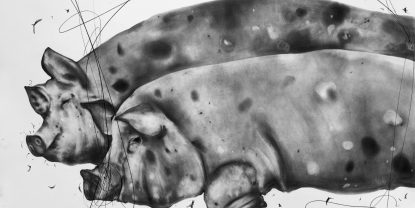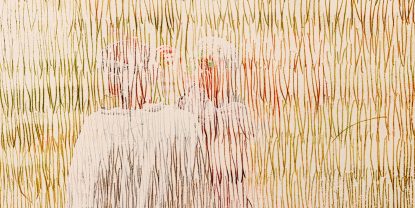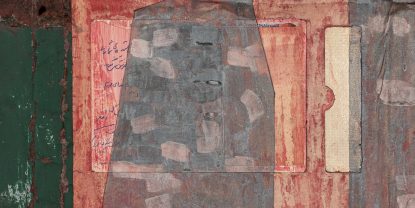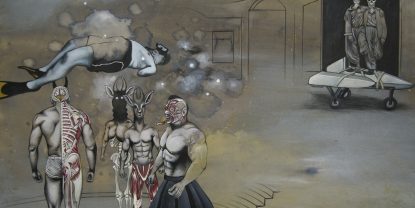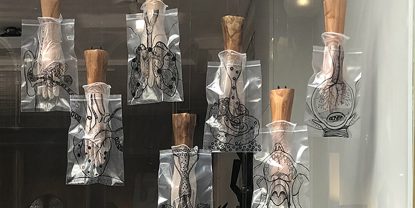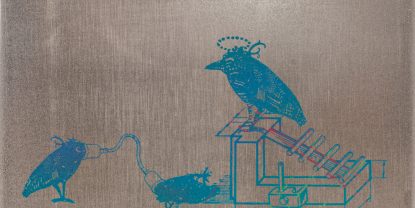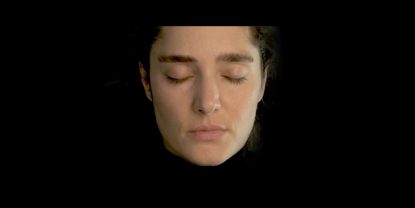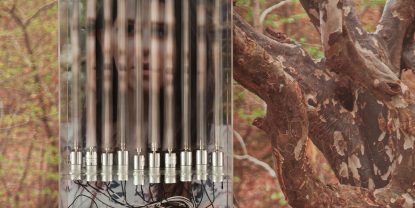ایژا نَو ۲۰۲۱
نمایشگاه گروهی
۲۹ مهر — ۲ آبان، ۱۴۰۰
In the past, it was common among sailors on the southern coast of Iran to light a torch in times of danger to seek help. It was called the “light of redemption.” “On that ship there is the light of redemption,” they say of a sinking ship or boat on the same shores today. The artists of the show, as well as their peers, also know that there is redemption after drowning and plunging into deep waters. Instead of awaiting a savior, they seek to swim for salvation, renew their relationship with the turbulent world around them, and redefine themselves by recognizing their relation to the world outside through their connection to technology, nature, and politics; it also defines the relationship of the Iranian human with “the other,” creating some sort of eclectic-accidental identity for them.
The artistic practice presented by these seven artists seems to be the result of the life and experience of a generation born after the Iranian revolution and the war: a tumultuous period in the Middle East, during which even the simplest decision for everyday life is extraordinarily determined by the challenging circumstances outside. Indeed, each artist is a simple, familiar allegory of a generation that, despite their common concerns and anxieties that stem from their sterilized geographic location, the way they treat media, their narrative style, and their perception of reality, are unique and extensive.
Using the most basic means of visual creation, namely pencil and paper, Sara Abbasian tells the story of the unceasing violence of human beings to themselves and their natural environment. Abbasian’s drawings of humans and animals in her “Epidemy” series are tantamount to an ominous prediction, whereas “Cluster Five” accurately outlines those predictions that have come to pass. Similar to a medium, she summons the dead into the world of the living and then portrays them: an irritant, nightmarish image that stuns the viewer into rediscovering their relation to nature, whose lot has been nothing but death and destruction after nursing us for millennia.
The works of Amir-Nasr Kamgooyan represent a state of unity among contrary forms of the universe that “un-define” the border between existence and non-existence, organic and inorganic, sleep and wakefulness, remembrance and oblivion. By taking a close, hard look at tools and plants, he portrays unity in a coincidental manner, placing mechanical people in an asymmetrical symmetry between a multitude of plants, birds, and large/tiny creatures. In continuation of his previous series, these works have taken an intemporal, disembodied path, with no trace of the present, while not belonging to the past or the future.
Sasan Abri is an artist with his heart bent to memories. With his unique photo printing technique and similar to a man on a remote island waiting to be salvaged, he counts the days by scratching on paper, like tally marks on a prison wall, reconstructing events as he remembers them. Recently becoming tragically acquainted with grief, while he has struggled between his own life and death, he recreates old photographs of the deceased in his “A Little While” series, inviting them for a conversation and a last supper in our world.
In Majid Bigleri’s work, hiding visual codes and gradually injecting essential questions into the audience’s mind leads to the blurring of the border between truth and reality. In “Soot, Fog, Soil,” the audience joins the artist in the questioning process: Can one find a real relationship between himself and a dream land in the mind through migration? Or, is possible to wash away the traces of dirt from a land by simply leaving it? Much like his peers, who gather recollections from fragments of events, with his pasting and assemblages made of recycled materials, he examines war, technology, and the bleak fate that discovery of oil has brought upon the Middle East.
Elika Hedayat’s works portray a terrifying image of a dark, certain future that awaits all of us: a promised paradise or hell, a purgatory experienced, or perhaps a present state that one needs not wait for because it is already there. In her surreal, suspended world, there is no answer to this dilemma and in her grotesque imagery, she seeks to find a way out of his inner dystopia by searching for the relation of the body to politics and ideology.
Throughout his career, Arya Tabandehpour has always been seeking to define himself by exploring the disturbed relationship between man, nature, and technology. Using codes and polarizers, he considers the dominance of machines over all aspects of human life. In another part of the work and using an interactive apparatus, he examines the eternal relationship between human’s return to nature and how nature regenerates humans. He may not find a definite answers to his questions; nonetheless, he realizes that man, for whom technology now used as a narcotic to ease the pain, can find the only remedy in nature.
Similar to a psychoanalyst, and, at the same time, a neuroscientist, Ali Phi explores memories and the contents of his mind as he pours his inner vibrancy into the container of abstract images. Like the other five artists, he constantly questions reality, experiences, and memories. The relationship between changing habitats, its impact on the human mind and soul, and the formation of new memories in relation to that change, are depicted in visual codes that act like an electroencephalograph.
This project is a convergence of questions, without intending to offer definite answers. It is a way of confronting and dealing with dilemmas. The seven artists and their shipwrecked peers have all reached a remote islands, on which sitting around, waiting for a rescue ship, or even gathering food to survive makes no sense. They seek refuge in the isolation of their studios with neither optimism nor pessimism, and, as they create their art, they seek profound peace, and perhaps eternal redemption, before drowning!
